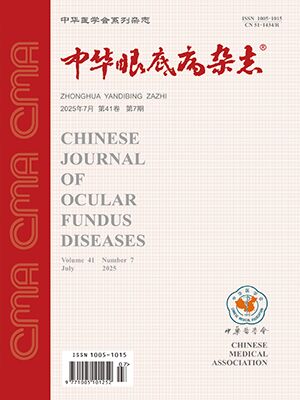Objective To evaluate the anatomic outcome after lenssparing vitrectomy (LSV) or scleral buckle (SB) for stage 4 retinopathy of prematurity (ROP). MethodsThe clinical data of 39 infants (50 eyes) with 4a (20 eyes) or 4b (30 eyes) were retrospectively analyzed. The age ranged from two to 18 months, with a mean of (6.0±3.4) months. The gestational age ranged from 26 to 33 weeks, with a mean of (30.0±1.6) weeks. The birth weight ranged from 800 to 1900 g, with a mean of (1404.5±237.6) g. Nineteen eyes underwent SB and 31 eyes underwent LSV. Follow-up ranged from 6 to 84 months, with a mean of (26.0±21.7) months. The anatomical and refractive results were reviewed at the final follow-up. ResultsThe anatomic success of SB was 100.0% (19 of 19 eyes) and that of LSV was 87.1% (27 of 31 eyes). Among the patients in whom treatment failed, 4 were in the LSV group (4/31, 12.9%). The buckles of 5 eyes (5/19, 26.3%) were removed. At the end of the followup, the mean myopic refraction was (-4.46±2.49) diopters (ranging from -1.25 to 11.00 diopters) in the LSV group, and (-3.21±1.96) diopters (ranging from -1.25 to 9.25 diopters) in the SB group. There was no significant difference between two groups (F=2.76, P=0.103). ConclusionThe anatomic outcome after LSV or SB for stage 4 ROP was excellent.
Citation: Hong YIN. Anatomic outcomes of scleral buckling or lens-sparing vitrectomy for stage 4 retinopathy of prematurity. Chinese Journal of Ocular Fundus Diseases, 2012, 28(1): 26-28. doi: Copy
Copyright © the editorial department of Chinese Journal of Ocular Fundus Diseases of West China Medical Publisher. All rights reserved




